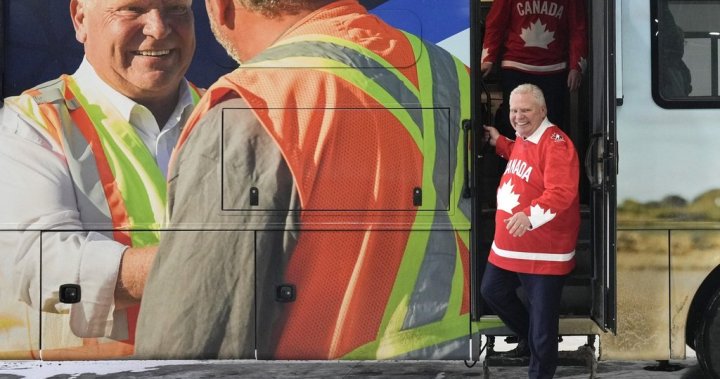Canada
Ford highlights promise to speed up Ring of Fire approvals at stop in Thunder Bay

Accelerating Ontario’s Economic Future: Doug Ford’s Vision for the Ring of Fire
Doug Ford, the leader of the Ontario Progressive Conservative Party, emphasized his commitment to expediting project approvals in the mineral-rich Ring of Fire during his visit to northern Ontario on the final weekend of the provincial election campaign. Speaking in Thunder Bay, Ford highlighted the region’s critical minerals as Ontario’s strategic advantage in the face of potential U.S. tariffs, a theme he has consistently prioritized throughout the snap election. Ford underscored the importance of extracting, processing, and distributing these critical minerals to boost Ontario’s leverage on the global stage. He reaffirmed his government’s focus on unlocking the Ring of Fire’s economic potential, which he believes is essential for building a robust electric vehicle manufacturing chain in the province.
Ford’s vision includes streamlining bureaucratic processes and urging the federal government to remove unnecessary barriers that hinder major projects under provincial jurisdiction. His government has positioned the Ring of Fire as a cornerstone of Ontario’s economic strategy, aiming to establish the province as a leader in critical mineral production. This approach aligns with Ford’s broader goal of creating an end-to-end electric vehicle manufacturing ecosystem, which he believes will secure Ontario’s place in the global EV market. By prioritizing the Ring of Fire, Ford is signaling his determination to leverage Ontario’s natural resources to drive economic growth and resilience.
In addition to accelerating project approvals, Ford announced significant funding to support First Nations’ participation in critical mineral development. He pledged $70 million to the Aboriginal Participation Fund, which will provide training for First Nations workers, enabling them to directly benefit from mining projects. Furthermore, Ford committed $3 billion to a program aimed at boosting First Nations equity participation, tripling the existing loan guarantee program. These investments reflect Ford’s commitment to fostering partnerships with Indigenous communities and ensuring they share in the economic opportunities generated by the Ring of Fire. By addressing First Nations’ involvement, Ford is not only advancing economic inclusion but also working to build trust and collaboration with Indigenous leaders.
Ford’s focus on the Ring of Fire and critical minerals is also driven by his concern about Ontario’s economic stability in light of potential challenges from the U.S., particularly under a Donald Trump presidency. He has argued that securing a stronger mandate will enable his government to protect Ontario’s economy and navigate the complexities of international trade. Ford’s two trips to Washington during the campaign underscore his emphasis on maintaining strong relations with the U.S. while ensuring Ontario’s interests are safeguarded. His opponents, however, have criticized the snap election as unnecessary, given that Ford already held a majority government and could have implemented stimulus measures without going to the polls.
As the campaign entered its final stretch, other party leaders also intensified their efforts to connect with voters. Green Party Leader Mike Schreiner announced proposals targeting Ontario’s youth, including the elimination of interest on student debt, lowering the voting age to 16, and reducing wait times for youth mental health services to 30 days or less. Liberal Leader Bonnie Crombie cast an advance ballot in Mississauga and planned to canvass in several Toronto ridings, while NDP Leader Marit Stiles focused on stops in Toronto, Kingston, and Ottawa, culminating in an evening rally. The Liberals and NDP released their full platforms just days before the vote, with the Progressive Conservatives set to follow suit on Monday. The Greens had unveiled their platform earlier in February.
The final days of the campaign highlighted the stark contrasts between the parties’ priorities and visions for Ontario’s future. Ford’s focus on the Ring of Fire and critical minerals reflects his government’s emphasis on resource development and economic growth. Meanwhile, the other parties are prioritizing issues such as youth engagement, mental health, and economic fairness. As voters prepare to cast their ballots, the election serves as a pivotal moment for Ontario, with significant implications for the province’s economy, environment, and social policies. The outcome will shape the direction of Ontario for the next four years, making this election a defining moment for the province’s future.











